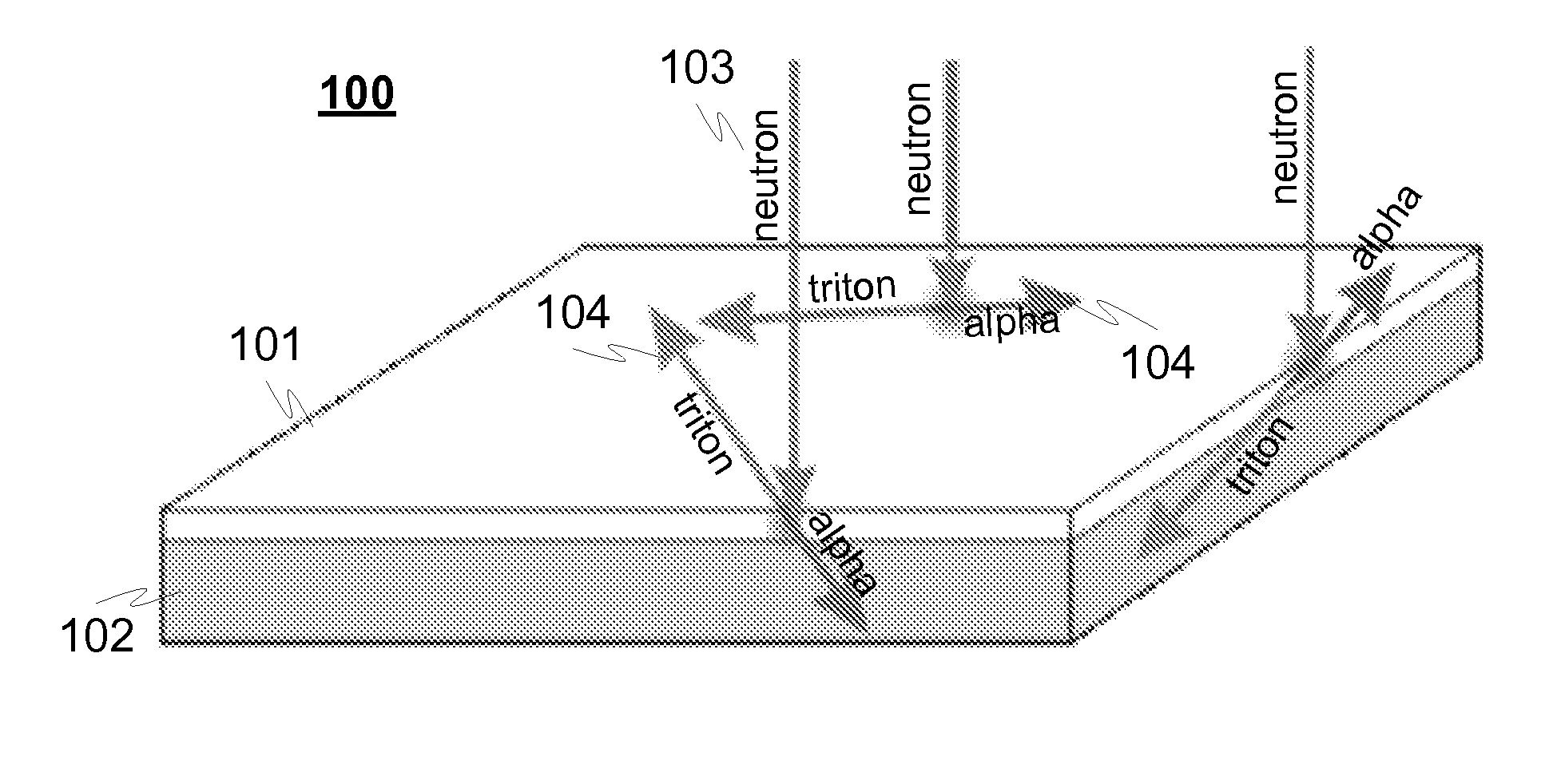Neutron detector with neutron converter, method for manufacturing the neutron detector and neutron imaging apparatus
a neutron detector and converter technology, applied in the field of neutron detectors, can solve problems such as disassembly and assembly errors, and achieve the effects of effective detection, effective neutron detectors, and effective detection
- Summary
- Abstract
- Description
- Claims
- Application Information
AI Technical Summary
Benefits of technology
Problems solved by technology
Method used
Image
Examples
Embodiment Construction
[0070]I Detector Structure—Neutron Converter
[0071]The semiconductor detectors (e.g. illustrated in FIGS. 1 and 10-18) are typically adapted for the thermal neutron detection and imaging, and are supplemented with a material (neutron reactive material) which “converts” neutrons into reaction products. The reaction products advantageously transfer its energy to charge carriers, which can be electrically detected directly in the semiconductor detector. Silicon is very commonly used in the detectors but there are besides silicon also other types of semiconductor materials which can be used, such as silicon carbide, germanium, gallium arsenide (GaAs), gallium phosphide, gallium nitride, indium phosphide, cadmium telluride (CdTe), cadmium zinctelluride (CdZnTe), mercuric iodide, lead iodide, and composite materials based on boron nitride (BN) or lithium fluoride (LiF). Their advantage is that the neutron converting material can be presented directly in their volume. For example silicon wa...
PUM
| Property | Measurement | Unit |
|---|---|---|
| thickness | aaaaa | aaaaa |
| thickness | aaaaa | aaaaa |
| thickness | aaaaa | aaaaa |
Abstract
Description
Claims
Application Information
 Login to View More
Login to View More - R&D
- Intellectual Property
- Life Sciences
- Materials
- Tech Scout
- Unparalleled Data Quality
- Higher Quality Content
- 60% Fewer Hallucinations
Browse by: Latest US Patents, China's latest patents, Technical Efficacy Thesaurus, Application Domain, Technology Topic, Popular Technical Reports.
© 2025 PatSnap. All rights reserved.Legal|Privacy policy|Modern Slavery Act Transparency Statement|Sitemap|About US| Contact US: help@patsnap.com



